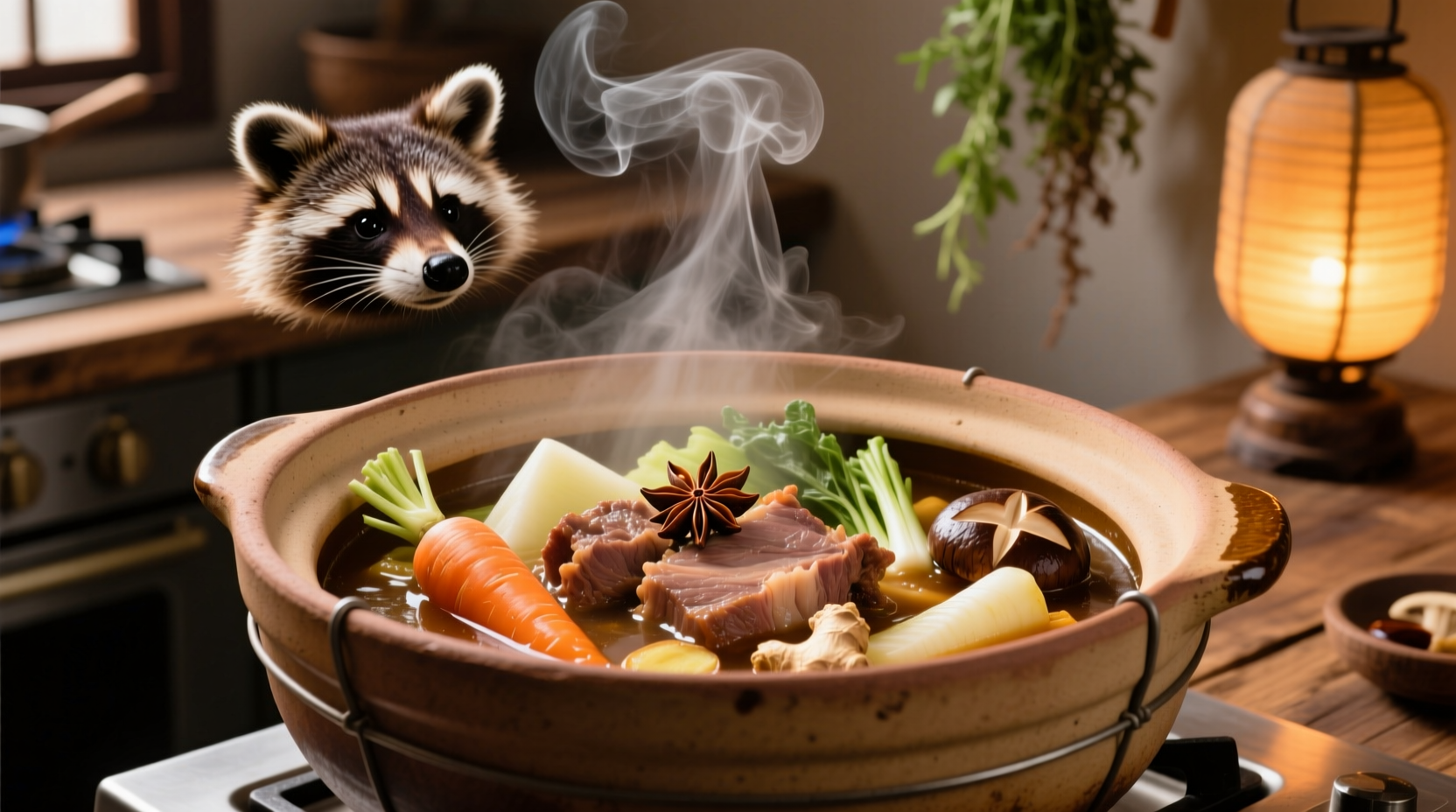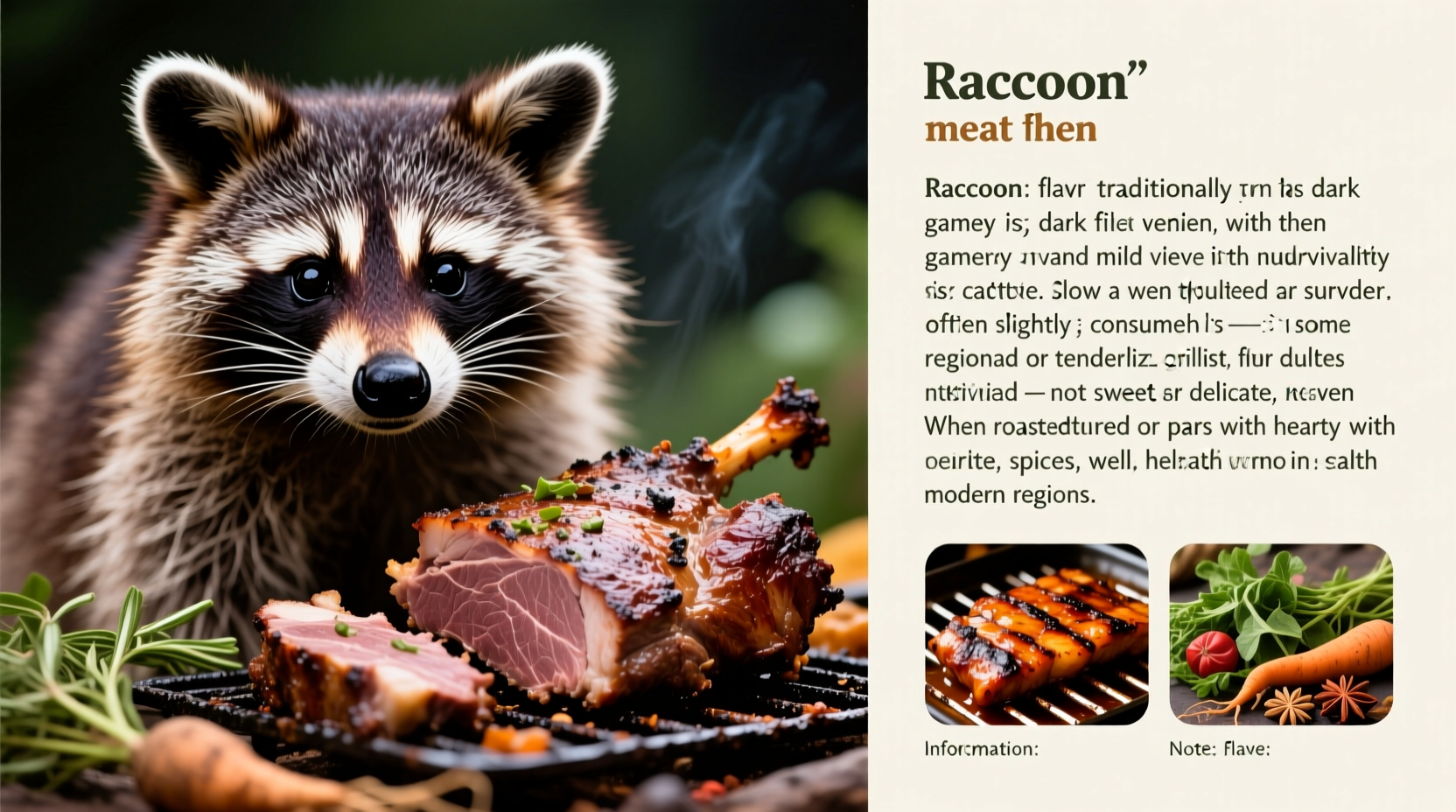Curious about unconventional game meats? You're not alone. Many outdoor enthusiasts, survivalists, and culinary adventurers wonder what raccoon tastes like before considering it as a food source. This comprehensive guide delivers exactly what you need to know about raccoon meat's flavor profile, safety considerations, and preparation techniques based on historical practices and modern culinary expertise.
Understanding Raccoon Meat's Flavor Characteristics
When properly prepared, raccoon offers a distinctive culinary experience that defies common misconceptions. The meat's flavor profile varies significantly based on the animal's diet, age, and preparation method. Hunters and chefs who've worked with raccoon describe it as having a mild gamey flavor—less intense than venison but more pronounced than domestic pork.
The texture resembles dark chicken meat but with more connective tissue, requiring slow cooking methods to achieve tenderness. Younger raccoons yield more tender meat, while older animals produce tougher, stronger-flavored meat. The fat carries the most distinctive taste, often described as musky or earthy, which is why most experienced preparers recommend removing visible fat before cooking.
| Meat Type | Flavor Profile | Texture | Best Cooking Method |
|---|---|---|---|
| Raccoon | Mild gamey, similar to dark chicken with pork undertones | Lean but tough if not slow-cooked | Braising, stewing, slow roasting |
| Venison | Strong gamey flavor | Very lean, can be dry | Marinating, quick searing |
| Rabbit | Mild, slightly sweet | Tender when young | Pan-frying, roasting |
| Squirrel | Delicate gamey flavor | Firm but tender | Braising, frying |
How Preparation Affects Raccoon's Taste
The cooking technique dramatically influences what raccoon tastes like. Traditional preparation involves several critical steps that impact the final flavor:
- Field dressing immediately after harvest to prevent meat spoilage and reduce gamey flavors
- Aging the meat for 2-3 days in cold conditions (around 34°F/1°C) to tenderize and mellow flavors
- Soaking in saltwater or buttermilk for 12-24 hours to draw out blood and reduce strong flavors
- Trimming all visible fat and glands, which contain the strongest flavors
- Slow cooking at low temperatures (275-300°F) for several hours to break down connective tissue
Many traditional recipes incorporate strong seasonings like garlic, onions, bay leaves, and Worcestershire sauce to complement raccoon's natural flavor. The meat absorbs marinades exceptionally well, making it suitable for various culinary traditions from Southern American to French country cooking.

Safety Considerations for Consuming Raccoon
Before considering raccoon as food, understanding potential health risks is crucial. According to the Centers for Disease Control and Prevention (CDC), raccoons can carry Baylisascaris procyonis, a roundworm that causes severe neurological disease in humans if ingested. Proper cooking to an internal temperature of 165°F (74°C) kills this parasite.
Additional safety considerations include:
- Raccoons in urban areas may have consumed toxic substances or garbage, affecting meat quality
- Never consume raccoons that appear sick or behave abnormally
- Wear gloves when handling carcasses to prevent disease transmission
- Check local regulations—some states prohibit or restrict raccoon consumption
The U.S. Fish and Wildlife Service recommends that hunters follow proper field dressing techniques and thoroughly cook all wild game to ensure safety. State wildlife agencies often provide specific guidelines for safe preparation of local game species.
Historical and Cultural Context of Raccoon Consumption
Raccoon has been part of the North American diet for centuries. Indigenous peoples across the continent incorporated raccoon into their food systems, particularly during winter months when other game was scarce. Historical records show that early European settlers adopted raccoon consumption from Native Americans, with raccoon becoming a common food source throughout the 18th and 19th centuries.
During the Great Depression, raccoon provided crucial protein for many rural families. The 1932 cookbook "Rural Free Delivery Cook Book" included multiple raccoon recipes, reflecting its status as practical sustenance. While less common today, raccoon remains part of culinary tradition in certain regions, particularly the rural South and Midwest.
Practical Guidance for First-Time Raccoon Cooks
If you're considering trying raccoon meat, follow these practical steps for the best experience:
- Source responsibly: Obtain raccoon from rural areas where the animal has likely consumed a natural diet
- Process carefully: Remove all glands and fat, which contain the strongest flavors
- Marinate thoroughly: Use acidic ingredients like buttermilk, vinegar, or wine for 12-24 hours
- Cook low and slow: Braise or stew for at least 3 hours at 275-300°F to achieve tenderness
- Season boldly: Complement the meat with robust flavors like smoked paprika, garlic, and herbs
A simple preparation method that yields excellent results involves browning the meat, then simmering with onions, carrots, celery, tomatoes, and herbs for 3-4 hours until fork-tender. The resulting stew showcases what raccoon tastes like at its best—rich, flavorful, and satisfying without overwhelming gamey notes.
Does Raccoon Taste Good? Setting Realistic Expectations
Whether raccoon tastes good depends largely on preparation and personal preferences. Those accustomed to mild domestic meats may find raccoon's flavor distinctive at first, while game enthusiasts often appreciate its unique character. The key is managing expectations—raccoon won't taste like chicken, but properly prepared, it offers a satisfying eating experience with its own culinary merits.
Many first-time tasters report that raccoon's flavor becomes more appealing with repeated exposure, similar to other game meats. The meat's ability to absorb surrounding flavors makes it versatile in various culinary applications, from traditional Southern Brunswick stew to French-style civet.











 浙公网安备
33010002000092号
浙公网安备
33010002000092号 浙B2-20120091-4
浙B2-20120091-4